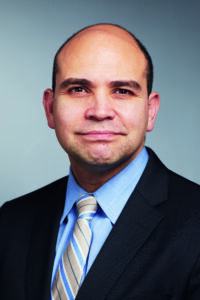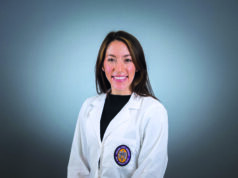
Against the backdrop of a national shortage in the vascular surgery workforce, a recent study has found that the Society for Vascular Surgery (SVS) VAM General Surgery and Medical Student Program “has a positive impact on interest in vascular surgery,” with more than 50% of scholarship recipients matching into the field.
Paula Pinto Rodriguez, MD, a postdoctoral research fellow at the Yale School of Medicine in New Haven, Connecticut, is set to present this finding during the William J. von Liebig Forum (Wednesday, June 19, 8:10–9:45 a.m. in the West Building, Level 3, Skyline Ballroom). Rodriguez will add that the quality of the program and the number of scholarships correlate with vascular surgery Match rates and thus advise that additional investment in similar programs “could help close the gap in the workforce.”
The overarching aim of the study, led by senior author Cassius Iyad Ochoa Chaar, MD, associate professor in surgery at Yale School of Medicine and chair of the SVS Resident and Student Outreach Committee (RSOC), was to increase interest in the vascular surgery specialty. The SVS RSOC developed a dedicated program for general surgery residents and medical students at VAM and invested in a scholarship program to support attendee expenses, with the study’s main objective being to assess the program’s effectiveness, correlating recipient feedback with likelihood of matching into a vascular surgery training program.
Rodriguez, Chaar and colleagues detail in their abstract that records related to the VAM initiative from 2013–2023 were reviewed, focusing on evaluations of the program. They note that the program included a simulation session from 2013–2019.
Going into the specifics of the study methods, the researchers outline that the average Match rate into vascular surgery was used to divide the data into below-average and above-average groups.
Furthermore, they write that survey responses were based on a five-point Likert scale and allowed for comments, with responses divided into high value, strongly favoring the activity, and low value. The data from years of above- and below-average Match rate were compared. The study revealed that the SVS awarded general surgery residents and medical students 1,040 travel scholarships over 10 years.
Rodriguez, Chaar et al found that, overall, applicants had a 43% success rate in receiving a scholarship, with the annual number of applicants increasing, while the number of scholarships and Match success rates significantly decreased over time. In addition, the research team established that the average Match rate into vascular surgery among scholarship recipients was 50.2%, decreasing over time.
Rodriguez, Chaar and colleagues further detail that the survey response rate was 33%. Results from the survey showed that, during above-average Match rate years, evaluations for simulation allotted time and lectures were significantly more likely to be high value compared to below-average years.
In addition, they reveal that simulation content and residency fair consistently had the most favorable evaluations, and that, overall, the program had a consistently positive impact on recipients’ interest in vascular surgery.
Additional findings include the fact that trainees in the above-average group were significantly more likely to provide positive comments, and that several recipients commented on the need for a dedicated space to interact with faculty and mentors, and highlighted simulation as the standout aspect of the program.
“Our study demonstrates the positive impact that the program has on trainees’ interest in vascular surgery and highlights the return on investment to our society. Expanding this program and developing similar ones in other vascular surgery societies is crucial to keep attracting the brightest trainees to our specialty,” Chaar told VS@VAM ahead of the presentation.












